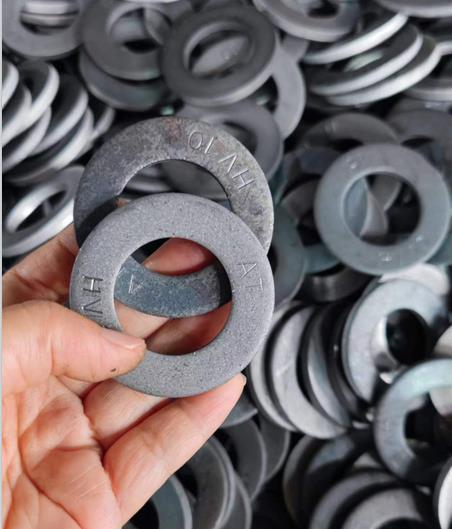Specifications for Type B Narrow Flat Washer Dimensions and Manufacturing Details
The Importance of Type B Narrow Flat Washers Dimensions and Manufacturing Insights
When it comes to mechanical assembly and fastening, the choice of washer can significantly impact the quality and durability of the final product. Among the various types of washers, Type B narrow flat washers play a crucial role in providing stability, distributing loads, and preventing damage to surfaces. This article will delve into the dimensions, manufacturing process, and applications of Type B narrow flat washers.
Understanding Type B Narrow Flat Washers
Type B narrow flat washers are designed with specific characteristics that set them apart from other washer types. These washers are typically thinner and have a smaller outer diameter, making them ideal for applications where space is limited or where a precise fit is required. Their primary function is to distribute the load of the fastener, ensuring that surfaces remain intact and that the fastener achieves the desired tightness without damaging the material beneath it.
Dimensions of Type B Narrow Flat Washers
The dimensions of Type B narrow flat washers vary depending on the application and the specific requirements of the manufacturer. Generally, they come in various outer diameter (OD) and inner diameter (ID) sizes, measured in inches or millimeters. For instance, a common size may have an OD of 0.500 inches and an ID of 0.187 inches, but there can be a range of sizes available depending on customer specifications or industry standards.
Thickness is another critical dimension, as it affects the washer's ability to support loads without yielding. Manufacturers often provide a comprehensive catalog of sizes, allowing engineers and designers to select the appropriate washers for their applications. Additionally, washers can be manufactured from a variety of materials, including steel, stainless steel, and plastic, each offering its unique benefit in terms of strength, corrosion resistance, and weight.
type b narrow flat washer dimensions manufacturer

Manufacturing Process
The manufacture of Type B narrow flat washers involves several essential steps to ensure quality and precision. First, raw materials are sourced, typically in coil form for metal washers, and then these materials are cut to size based on the required dimensions. The cutting process can be accomplished through stamping, shear cutting, or laser cutting methods, depending on the required precision and volume of production.
Once cut, the washers undergo a deburring process to remove any sharp edges. This step is essential to ensure safety during handling and installation. Following that, other processes such as heat treatment may be employed, particularly for metal washers, to enhance their strength and durability.
Quality control is integral to the manufacturing process; washers are often subjected to dimensional checks and material property tests to ensure they meet industry standards and customer specifications. This commitment to quality helps manufacturers provide reliable products that can endure the rigors of mechanical applications.
Applications
Type B narrow flat washers have a wide range of applications across various industries. They are commonly used in construction, automotive manufacturing, and machinery assembly. Their ability to distribute loads makes them particularly useful in situations where vibration may occur, such as in engines or heavy machinery.
In conclusion, Type B narrow flat washers are an indispensable component in numerous mechanical applications. Their dimensional characteristics and quality manufacturing processes contribute significantly to the functionality and longevity of mechanical assemblies. By selecting the right type of washer, engineers can ensure the integrity of their designs while maintaining performance and safety standards in their projects. As technology and requirements evolve, so too will the manufacturing processes and applications of these vital components, solidifying their place in engineering and manufacturing for years to come.
-
Top Choices for Plasterboard FixingNewsDec.26,2024
-
The Versatility of Specialty WashersNewsDec.26,2024
-
Secure Your ProjectsNewsDec.26,2024
-
Essential Screws for Chipboard Flooring ProjectsNewsDec.26,2024
-
Choosing the Right Drywall ScrewsNewsDec.26,2024
-
Black Phosphate Screws for Superior PerformanceNewsDec.26,2024
-
The Versatile Choice of Nylon Flat Washers for Your NeedsNewsDec.18,2024










